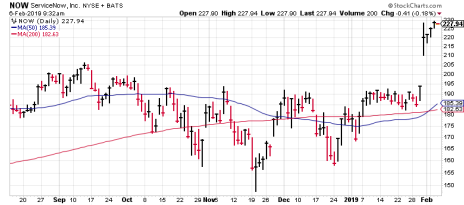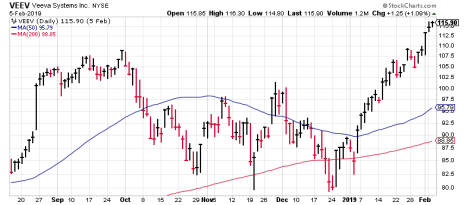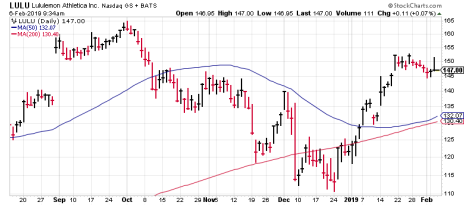In my last Cabot Wealth Daily, I went out on a bit of a limb and talked about my bullish longer-term view of the market for a variety of factors (if you missed it, you can read it HERE). And it’s been so far, so good, with the major indexes continuing higher and more leading stocks breaking out.
Sticking with the market for a moment, I want to touch on January’s huge results and what that usually portends for the rest of the year.
To be clear, I’m not a big calendar guy; if investing was that easy, everyone would be rich, and (unfortunately) that’s not going to happen. Heck, just look at last year—the summer is historically weak for the market (it was pretty good in 2018) and the fourth quarter is almost always good (last year, we had a mini-market crash). That’s why I pay attention to what’s actually happening, not what’s supposed to happen.
That said, when you see extremely hot Januarys, they do tend to have predictive powers. According to Ryan Detrick of LPL Financial, 2019 was just the seventh January (since 1950) that the S&P 500 returned at least 7%. Looking at the other six, the S&P 500 rallied by as much as 18% on average sometime during the following 11 months.
[text_ad use_post='129627']
I wouldn’t specifically trade based on January’s returns—in fact, a February rest wouldn’t surprise anyone—but going along with our 2-to-1 Blastoff Ratio I mentioned in my last Daily, it’s another sign that the market’s unusual recent strength is likely to lead to some solid gains in the months ahead.
Three Leading Stocks to Consider
Moving now to individual stocks, I wanted to touch on a couple of common questions I’m getting nowadays. The first concerns what to do with a stock you either don’t own and want to buy—but the stock has gone vertical in recent weeks. Should you jump in or wait for a pullback?
My answer: It depends. (You knew that was coming, right?) In many cases, stocks that look “high” have actually just had big moves after a multi-month rest period—combined with the healthy market, they’re probably decent buys.
Look at ServiceNow (NOW), a leading emerging blue-chip stock in the cloud software field. The stock built a base starting in mid-September, etched a higher low in December (better than the market), tightened up in January and then gapped to new highs on earnings last week. Short-term wiggles aside, this looks like a buyable breakaway gap.
But what about a name like Veeva Systems (VEEV), another cloud software player (albeit with a niche in the life sciences field)? It certainly looks great, with a persistent advance since the turn of the year and three days of good trading volume as it moved to new highs late last week. But having just run straight up, the odds favor (not a sure thing, but the odds favor it) some type of weakness, especially after the big push higher in recent days.
Really, while you definitely want to track the stocks that have put on impressive runs during the past couple of months, you also should be looking where few others are—at stocks that enjoyed good pops higher in early January but are now cooling off normally. That calm action is a sign the weak hands are generally out and the stock has come out of the public’s eye. In these cases, it usually doesn’t take much buying to get the stock moving.
One example today is Lululemon (LULU)—shares had a big correction during the market downturn, but then spiked more than halfway back partly due to a fantastic business update released early last month. And now the stock is mostly calming down; it had some weird action Tuesday, but overall is calmly consolidating its big January move.
To me, there are two ways to play a stock like LULU. The first is more aggressive—you could buy maybe a half-sized position (that is, invest half the dollars you normally would) here or on dips of another two or three points, and use a loss limit in the low-to-mid-130s (a drop down to there would look a bit abnormal for a calm pullback). Then you can fill out the position on any breakout above the recent high (call it 153, give or take) in the days or weeks ahead. Or, of course, you can simply wait for the breakout and put on shares there.
Exact buy points aside, I’m seeing many names still setting up—yes, some (mostly software stocks) are romping ahead, but many are resting after a good first few weeks of the year. These are the types of names to focus on for most new buying, while looking for some extended leading stocks to cool off.
Now, if you want to know what other leading stocks I’m currently recommending, you can subscribe to my Cabot Growth Investor advisory by clicking here.
[author_ad]





